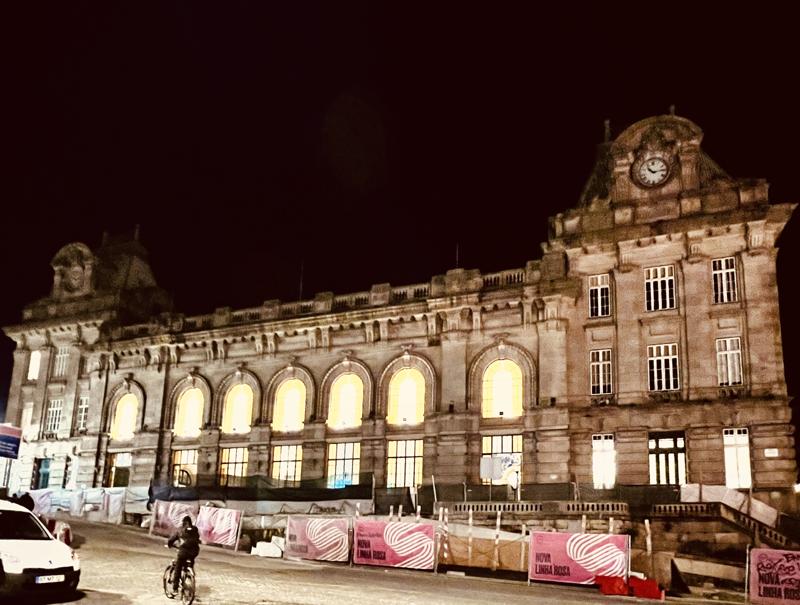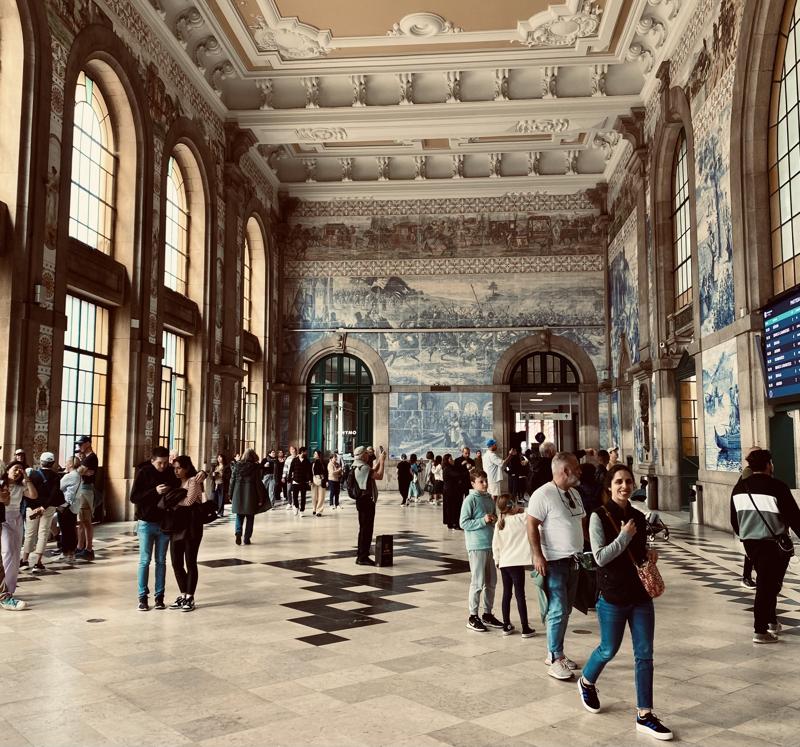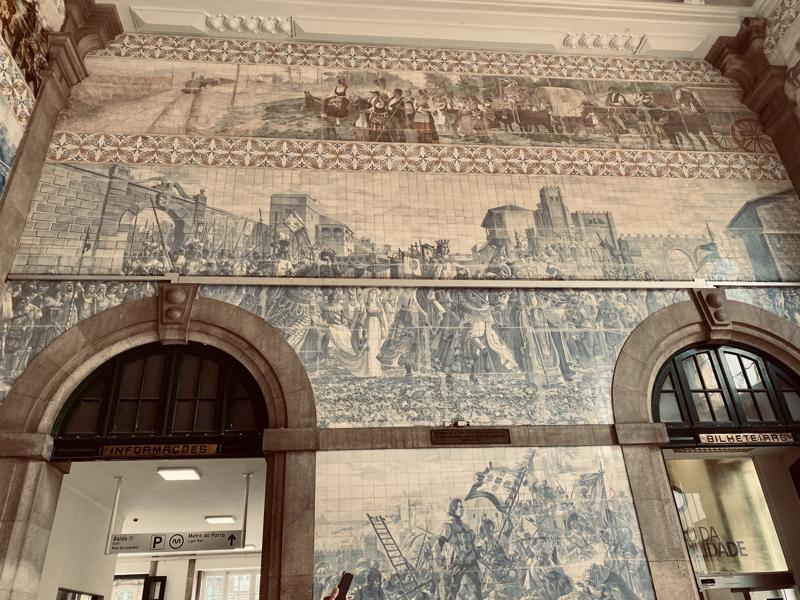Sao Bento Railway Station
Written By: Gail Clifford | Published By: Weekend Notes | April 10, 2024
A Journey Through History

São Bento Railway Station in Porto
Tucked above the bustling streets of Porto lies São Bento Railway Station, a hidden gem renowned for its extraordinary interior adorned with intricate ceramic tiles. Stepping inside this Beaux Arts building, visitors are transported through time, greeted by a breathtaking display of Portuguese history depicted on the walls. The building itself is a credit to architect José Marques da Silva (1869-1947), opening for business in 1916. Whether you’re just getting to town or heading out, take a moment to pause and admire the beauty of this extraordinary building. Or make it a deliberate stop or a spontaneous detour. Visiting São Bento Railway Station is an experience not to be missed. And the best part? It won’t cost you a dime!

Sao Bento Railroad Station Interior
Unexpected Beauty: The Interior Decor
While São Bento station may appear unassuming from the outside, its true beauty lies within. Designed by architect José Marques da Silva and inaugurated in 1916, the station boasts a remarkable interior adorned with ceramic tiles, known as azulejos, meticulously crafted by renowned artist Jorge Colaço. Our tour guide shared that manufactured tile can last 100 years but hand-painted tiles 1000. These are well on their way.

São Bento Railway Station history of Portugal transportation, King John, Henry the Navigator
A Tapestry of Tales: The Azulejo Art
As you enter São Bento station, prepare to be captivated by the mesmerizing frieze adorning the walls. Jorge Colaço’s masterful artistry unfolds, depicting scenes from Portuguese history, landscapes, and everyday life. Each tile tells a story, offering a glimpse into the rich tapestry of Portugal’s cultural heritage. From tales of early settlement and the history of transportation to the marriage of King John I and Philippa of Lancaster, and Henry the Navigator, their son, voyage and conquest of distant lands.
A Blend of Cultures: The Influence of Delftware
The azulejo tradition, rooted in Moorish geometric patterns, evolved over the centuries, incorporating influences from around the world. The design of São Bento station’s tiles bears a striking resemblance to Delftware, the iconic blue and white ceramics originating from the Netherlands. Jorge Colaço’s Romantic style infuses each scene with emotion and depth, capturing the essence of Portuguese life with remarkable detail.
A Journey Within: Experiencing São Bento Station
Stepping into São Bento station is like stepping into a living museum, where history comes to life through the vibrant hues of ceramic tiles. Whether you’re admiring scenes of Henry the Navigator’s exploits or marveling at everyday moments frozen in time, São Bento offers a truly immersive experience for travelers and history enthusiasts alike.
Gail Clifford
Latest posts by Gail Clifford (see all)
- We Were Warned: An Anthology of Short Stories - October 23, 2024
- Exploring Dublin’s Royal Canal: A Journey Through Time and Nature - September 30, 2024
- The 8 Best Dr. Phillips Restaurants | Dr. Phillips, West Orlando, Florida - September 19, 2024
- Discover Cascais, Portugal - September 18, 2024
- The Ultimate Expat Guide How to Buy Property in Costa Rica, Ireland and the USA With Less Stress - September 17, 2024

0 Comments